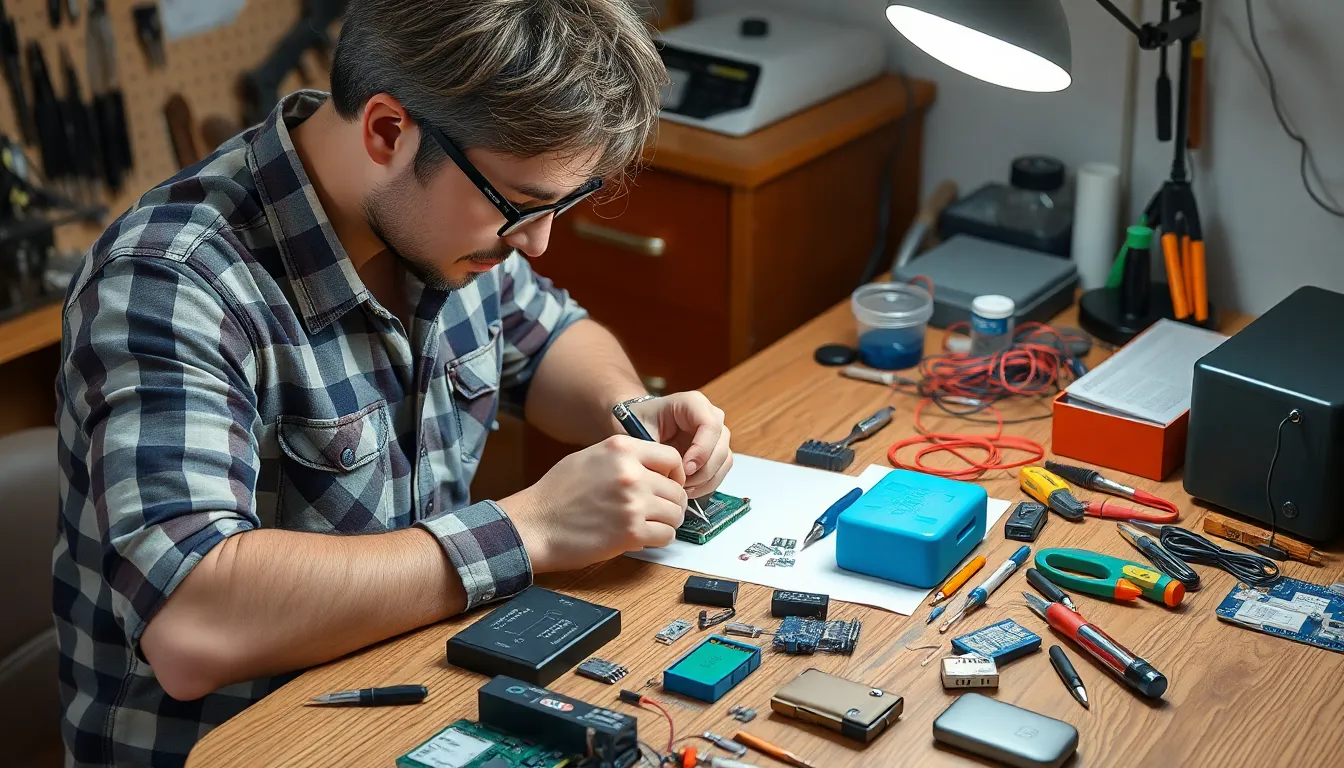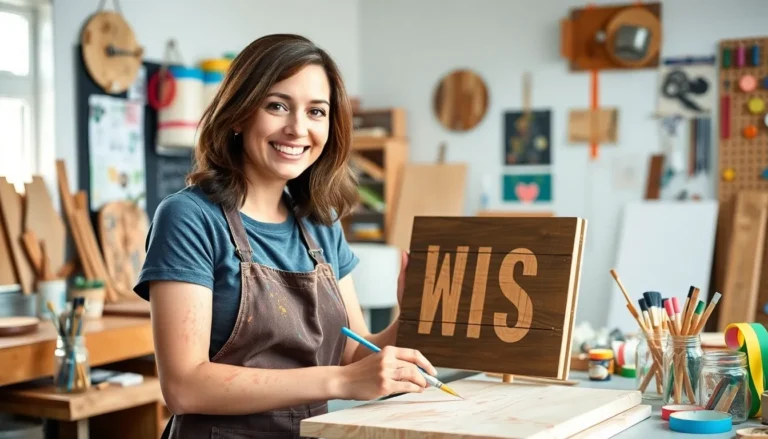Table of Contents
ToggleSoldering might sound like a task for mad scientists or tech wizards, but it’s actually a fun and rewarding DIY skill anyone can master. Imagine transforming a pile of electronic parts into a fully functioning gadget or creating unique jewelry that sparks conversation. With a little practice and the right projects, anyone can become the proud owner of a soldering iron and a world of creativity.
Getting Started With DIY Soldering Projects
Soldering offers endless possibilities for DIY enthusiasts. Understanding the essential tools and safety measures ensures a successful experience.
Essential Tools for Soldering
A soldering iron is crucial for any project. It provides the heat required to melt solder and connect components. Solder comes next, with options like lead-free or rosin core varieties available. A soldering iron stand is important for safely holding the hot iron when not in use. Wire cutters help trim leads and excess components. Additionally, tweezers aid in positioning small parts. A multimeter ensures accurate measurements of voltage and resistance. Finally, a work surface protects the area and keeps projects organized.
Safety Tips for Soldering
Wearing safety glasses protects eyes from solder splashes. Always work in a well-ventilated space to reduce exposure to fumes. It’s smart to avoid skin contact with the hot iron to prevent burns. Keeping a first aid kit nearby can help address minor injuries. When soldering, avoid loose clothing and hair near the work area. Using a fume extractor eliminates harmful vapors. Lastly, unplugging the soldering iron when not in use prevents accidental burns or fires. Following these tips enhances the soldering experience.
Popular DIY Soldering Projects

Various DIY soldering projects cater to different skill levels, allowing enthusiasts to refine their skills while creating useful items. Projects range from beginner-friendly to advanced, appealing to a broad audience.
Beginner-Friendly Projects
Simple soldering kits provide a great starting point for novices. Examples include LED blinkers, basic soldering practice boards, and small electronics like a flashlight. These projects help build confidence and introduce fundamental techniques. Understanding how to connect components reinforces essential skills while offering hands-on experience. Utilizing pre-prepared kits ensures ease of assembly, minimizing frustration for beginners.
Intermediate-Level Projects
Intermediate projects introduce complexity without overwhelming the solderer. Creating a basic radio or a mini speaker leads to a deeper exploration of electronics. These projects require a greater understanding of circuit design and component function. Additionally, assembling a simple robot enhances the challenge, combining mechanics and electronics. Troubleshooting during these projects cultivates problem-solving skills, essential for further advancement.
Advanced Soldering Projects
Advanced soldering projects push creativity and technical skills to new heights. Building a custom synthesizer allows for personal expression and a strong grasp of circuitry. Similarly, creating a drone requires both soldering and programming expertise. Designing an Arduino-based project like a smart home system integrates various engineering concepts. Completing these projects not only showcases soldering proficiency but also prepares the individual for professional opportunities in electronics.
Best Practices for Successful Soldering
Mastering soldering requires adherence to best practices that ensure quality and durability. Understanding proper techniques and avoiding common pitfalls enhances the overall success of DIY projects.
Techniques for Proper Soldering
Begin by securing the components on a stable surface. Resting the soldering iron at a 45-degree angle promotes better heat transfer. Aim for a brief preheating of the components and pads for optimal adhesion. Heat both the lead and pad simultaneously, then apply solder directly to the joint. Ensure the solder flows evenly without creating excess blobs. Choose a suitable solder composition; a lead-free solder offers environmental benefits. Use a small amount of flux to improve solder flow, ensuring a solid connection. Clean the work area regularly to prevent contamination and encourage precision.
Common Mistakes to Avoid
Overheating components can damage sensitive parts, so monitor heat closely. Skipping the use of flux restricts solder flow and weakens connections. Applying too much solder can create shorts between adjacent connections. Improper tool handling often results in burns or dropped components. Failing to test solder joints with a multimeter might lead to undetected issues before final assembly. Neglecting safety precautions, like wearing goggles, increases the risk of injury. Forgetting to clean the soldering iron tip can diminish efficiency and quality, ultimately affecting the final outcome.
Resources for Learning Soldering
Learning soldering becomes easier with the right resources. Several options exist for those eager to improve their skills.
Online Tutorials and Courses
Online platforms offer a variety of tutorials and courses focused on soldering. Websites like YouTube provide free video demonstrations, which visually show techniques and best practices. Platforms such as Coursera and Udemy feature structured courses led by experts that often include assignments to practice newly learned skills. Reports indicate that structured learning improves retention and understanding. Engaging with online forums like Reddit’s soldering community allows enthusiasts to ask questions and share experiences, enhancing the learning process.
Books and Guides
Numerous books and guides cover soldering topics in depth. “The Art of Soldering” serves as a practical approach that breaks down complex concepts into manageable steps. Other titles, such as “Making the Most of Soldering,” go into detail about tools and materials essential for beginners and advanced users alike. DIY enthusiasts often recommend these resources for their clear instructions and illustrations. Many guides also include troubleshooting tips to help resolve common problems faced during projects, becoming invaluable for learners at any level.
Embracing DIY soldering projects opens up a world of creativity and innovation. With the right tools and techniques anyone can transform simple components into impressive gadgets or unique pieces of art. As individuals progress from beginner to advanced projects they not only enhance their soldering skills but also gain valuable insights into electronics.
The journey of learning soldering is supported by numerous resources that cater to all skill levels. Engaging with online communities and utilizing tutorials can significantly boost confidence and expertise. By practicing regularly and adhering to best practices anyone can enjoy a fulfilling and productive soldering experience.




